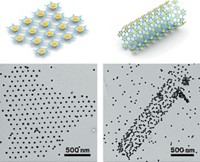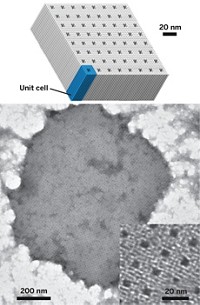Advertisement
Grab your lab coat. Let's get started
Welcome!
Welcome!
Create an account below to get 6 C&EN articles per month, receive newsletters and more - all free.
It seems this is your first time logging in online. Please enter the following information to continue.
As an ACS member you automatically get access to this site. All we need is few more details to create your reading experience.
Not you? Sign in with a different account.
Not you? Sign in with a different account.
ERROR 1
ERROR 1
ERROR 2
ERROR 2
ERROR 2
ERROR 2
ERROR 2
Password and Confirm password must match.
If you have an ACS member number, please enter it here so we can link this account to your membership. (optional)
ERROR 2
ACS values your privacy. By submitting your information, you are gaining access to C&EN and subscribing to our weekly newsletter. We use the information you provide to make your reading experience better, and we will never sell your data to third party members.
Materials
DNA-Driven Assembly With Nanoparticles
Method expands the types of materials that can be used for DNA-programmed construction
by Celia Henry Arnaud
May 27, 2013
| A version of this story appeared in
Volume 91, Issue 21
Nanoparticles can be the bricks for constructing materials from the ground up, with DNA linkers as the mortar that holds them together. Because of the difficulty of attaching DNA strands to nanoparticles, the approach has so far been limited to a few types of nanoparticles. Chad A. Mirkin and coworkers at Northwestern University have devised a general approach that expands the types of nanoparticles that can be used with DNA-guided assembly (Nat. Mater. 2013, DOI: 10.1038/nmat3647). Mirkin and coworkers take advantage of the fact that most nanoparticles are capped with hydrophobic ligands. They coat those ligands with an azide-containing amphiphilic polymer. They use DNA that contains a strained octyne ring and attach the DNA to the polymer via azide-alkyne cycloaddition. The nanoparticles are then ready to be used as building blocks in DNA-based colloidal crystallization. The researchers make colloidal lattices with various nanoparticles, including CdSe/ZnS core-shell quantum dots, gold nanoparticles, iron oxide nanoparticles, and platinum nanoparticles. They control the size and crystal packing of the lattices by changing the radius of the nanoparticles and the length of the DNA linkers.





Join the conversation
Contact the reporter
Submit a Letter to the Editor for publication
Engage with us on Twitter